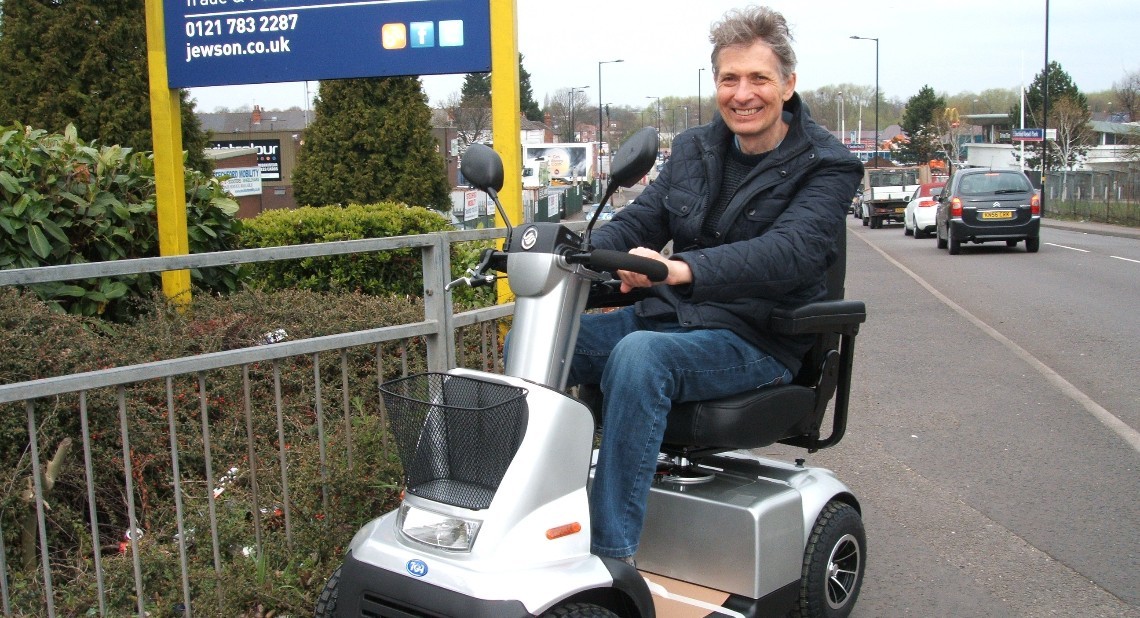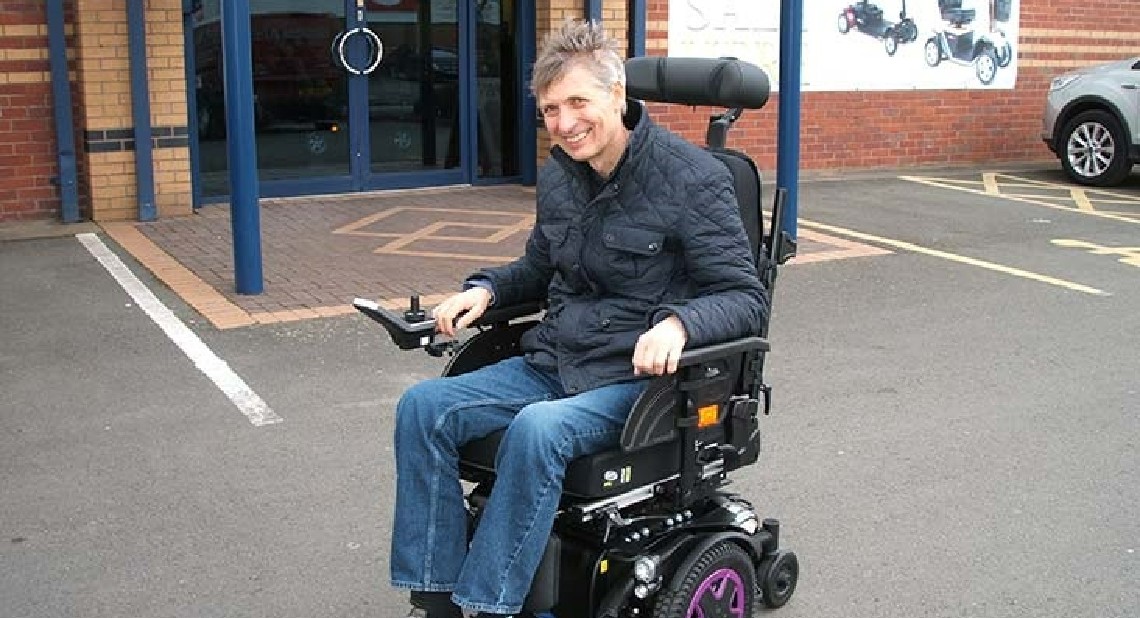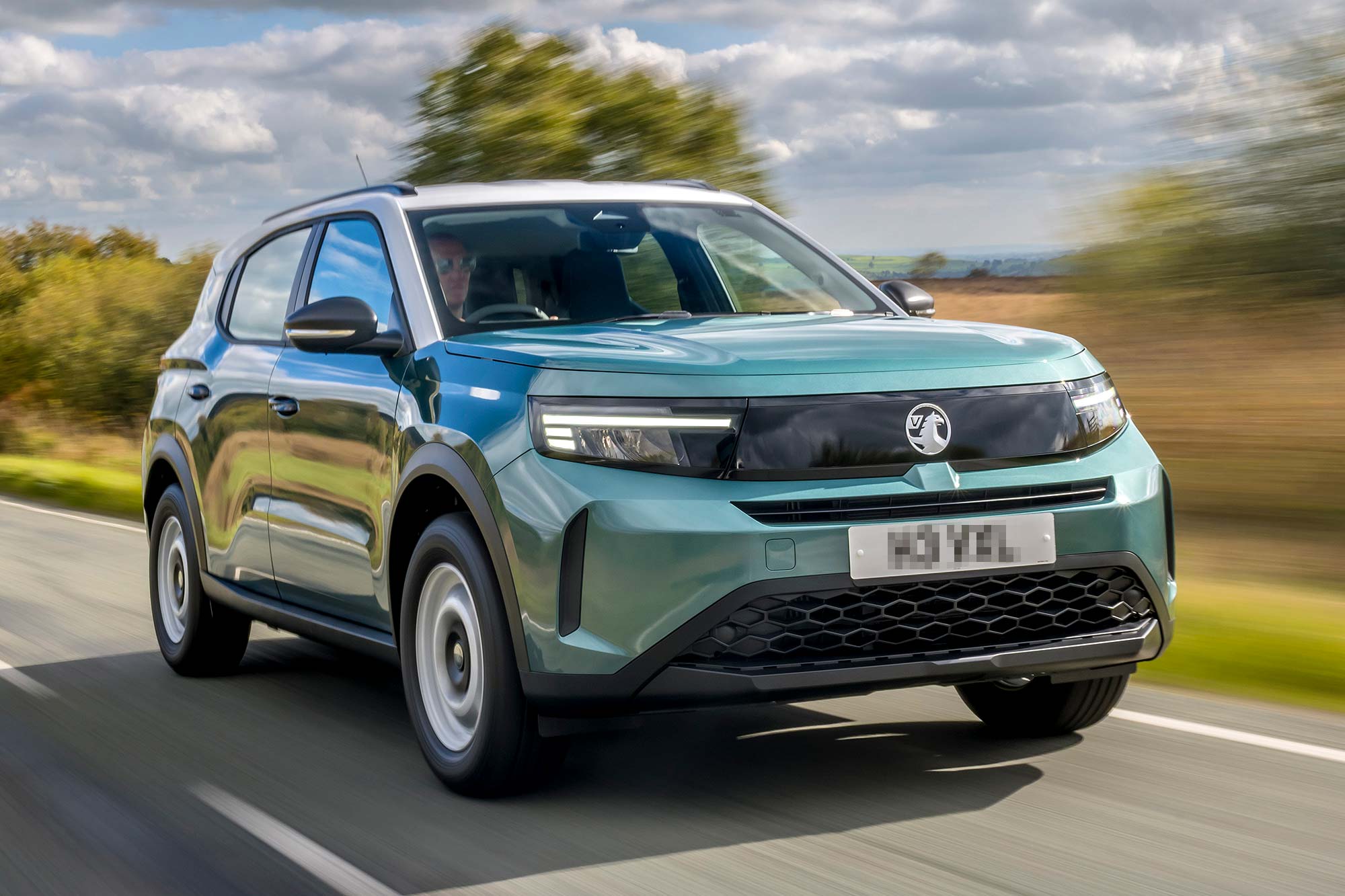Disability journalist, Ian Cook, has reviewed almost 100 scooters for the Motability Scheme in the last five years. He shares useful tips to help you navigate your mobility scooter with confidence.
I like trying out different scooters. I’ve been diagnosed with MS for 30 years, and my mobility has declined throughout. For me, a mobility scooter is like my legs, it’s my freedom. Scooters have been really helpful for me in two big ways: firstly, they’ve given me back my mobility, and secondly, traveling isn’t hard anymore. Instead of struggling to walk, I can zip around without any trouble.
Based on my experience, here are a few things you need to know about driving your mobility scooter.
What are the different types of mobility scooters?
There are two mobility scooter classes: class 2 and 3. Class 2 scooters are smaller and not as quick; some are foldable, and some are called “boot scooters” because you can stick them in the boot of your car. Class 2 scooters are designed for pavement use. Class 3 scooters, by contrast, can be used on the road and pavement. They are bigger, and they go faster.
When looking at scooters, you can tell a lot by their names. Those with names like “Komfy”, “Lite”, and “Minimo” tend to be the smaller class 2 scooters. Bigger class 3 scooters tend to be called things like “Ranger”, “Galaxy”, and “Monarch”.
Find out what types of mobility scooters are available on the Motability Scheme.
Where can I drive my mobility scooter?
On the pavements:
It is always safer to use your mobility scooter on the pavement instead of the road, but it is important to know the general rules around this. Class 2 and 3 scooters are good options for pavements. It is essential to be mindful of pedestrians when driving on the pavement, especially people with pushchairs and small children. You should also be thoughtful if there are other people with disabilities, such as wheelchair users and people with sight or hearing loss.
On the roads:
Only bigger Class 3 scooters can be driven on the road. While they are safe to drive on the road, there cannot be used on the following:
- Motorways
- Bus lanes
- ‘Cycle Only’ cycle lanes when in operation
On dual carriageways, class 3 scooters should not be used where there is a speed limit of over 50 mph. Check the Highway Code for specific legal requirements.
Is there a speed limit for mobility scooters?
For Class 2 mobility scooters:
Class 2 mobility scooters have a speed limit of 4 mph (6 km/h) and are designed to be used on pavements. At 4 mph, you’re travelling faster than an average pedestrian. The walking speed for pedestrians is only about 3 mph.
For Class 3 mobility scooters:
Class 3 mobility scooters have an upper speed limit of 8 mph (12 km/h). When driving over 4mph, these can legally be driven on the road. But always keep in mind that mobility scooters must not travel faster than 4 mph (6 km/h) on pavements or in pedestrian areas.
Is there a weight limit for mobility scooters?
A Class 3 scooter has a maximum weight of more than 23 stone. Class 2 scooters are lighter. The maximum weight here is 17 ½ stone, but most are much lighter, some can be as light as 3 stone.
As well as considering weight, there are also scooter “load issues”. “Load” means how much baggage, shopping, or medical equipment you carry. Try not to overload your scooter with things like your weekly shop. And keep your scooter balanced by not hanging shopping bags on the handlebars or tiller. Many scooters have small baskets at the front.
There are lots of accessories that can be added to your mobility scooter to fit around your lifestyle and the way you choose to use it.
Where can I park my scooter?
As a scooter user, you should not leave your scooter unattended if it gets in the way of other pedestrians. The Highway Code states that scooter users should observe all normal parking restrictions and be mindful of pedestrians, especially wheelchair users. It’s worth reading this before you drive your scooter so you know all the rules.
Are there any road essential accessories for my scooter?
Yes, a Class 3 scooter must have lights, a horn, and a rear-view mirror. Class 2 scooters are not legally required to have these, but some do. The rules from the Highway Code to keep in mind are:
- You must follow the same rules about using lights, indicators, and horns as other road vehicles if your vehicle is fitted with them
- At night, lights must be used and to be aware that other road users may not see you
- You should make yourself more visible, even in the daytime and also at dusk, for instance, wearing a reflective jacket or reflective strips on the back of the vehicle
In my option, the most useful accessory is probably a solid canopy with sides which some Class 3 scooters have. Other accessories worth looking out for include cup holders and bag covers.
What do I do if I have a problem with my mobility scooter?
If you lease your mobility scooter through the Motability Scheme, the all-inclusive lease package will cover you for a range of services, such as:
- Insurance: If you’re involved in an accident, report this to Direct Line Motability (DLM). The quickest way to do this is through your Motability Scheme online account under the ‘Insurance’ section.
- Breakdown: If you breakdown when you’re out and about, try to get to safe place away from any hazards, then call Motability Assist on 0800 953 5000. They will take you and your product home and then your dealer will be able to help you make sure any repairs are taken care of.
- Tyres: If your tyres are damaged through normal use (subject to the fair usage policy), then you can get these replaced. This also includes puncture repair if you have air-filled tyres.
- Batteries: If you think there is a problem with your battery, contact your dealer and they will be able to check this for you and arrange a replacement if needed.
More information on what to do if something happens to your scooter can be found on the Motability Scheme website.
Is there an eyesight test for scooter users?
There is no legal requirement for scooter users to take an eyesight test. However, it’s essential to have good eyesight to be able to judge distances and recognise hazards, just like if you were driving a car.
If you are not able to see correctly and use a mobility scooter, you’re putting yourself and others at risk. If you have driving glasses, use them and get your eyes tested every two years as recommended by eyesight experts.
Who can use a mobility scooter?
Only those who have trouble walking are eligible to use a mobility scooter. This can be due to an injury, physical disability, or medical condition. The different classes of scooters have certain restrictions based on age, for example, if someone under 14 years old needs a mobility scooter, then they will only be eligible to drive the Class 2 scooter.
You also do not need a driving license to drive a mobility scooter.
Key rules to remember when using your mobility scooter are neatly summed up in the Highway Code.
Interested in joining the Scheme?
About the Scheme
The Motability Scheme offers an all-inclusive package. If you are in receipt of a qualifying mobility allowance you can use it to lease a car, scooter, powered wheelchair, or Wheelchair Accessible Vehicle. The Scheme provides flexible and hassle-free access to a brand-new, reliable vehicle of your choice. As well as a great choice of cars, we also provide a wide range of Wheelchair Accessible Vehicles, scooters, and powered wheelchairs.
Related articles
Mobility scooter range: How far can yours travel?
3 or 4 wheels: which mobility scooter is right for you?
![]()






